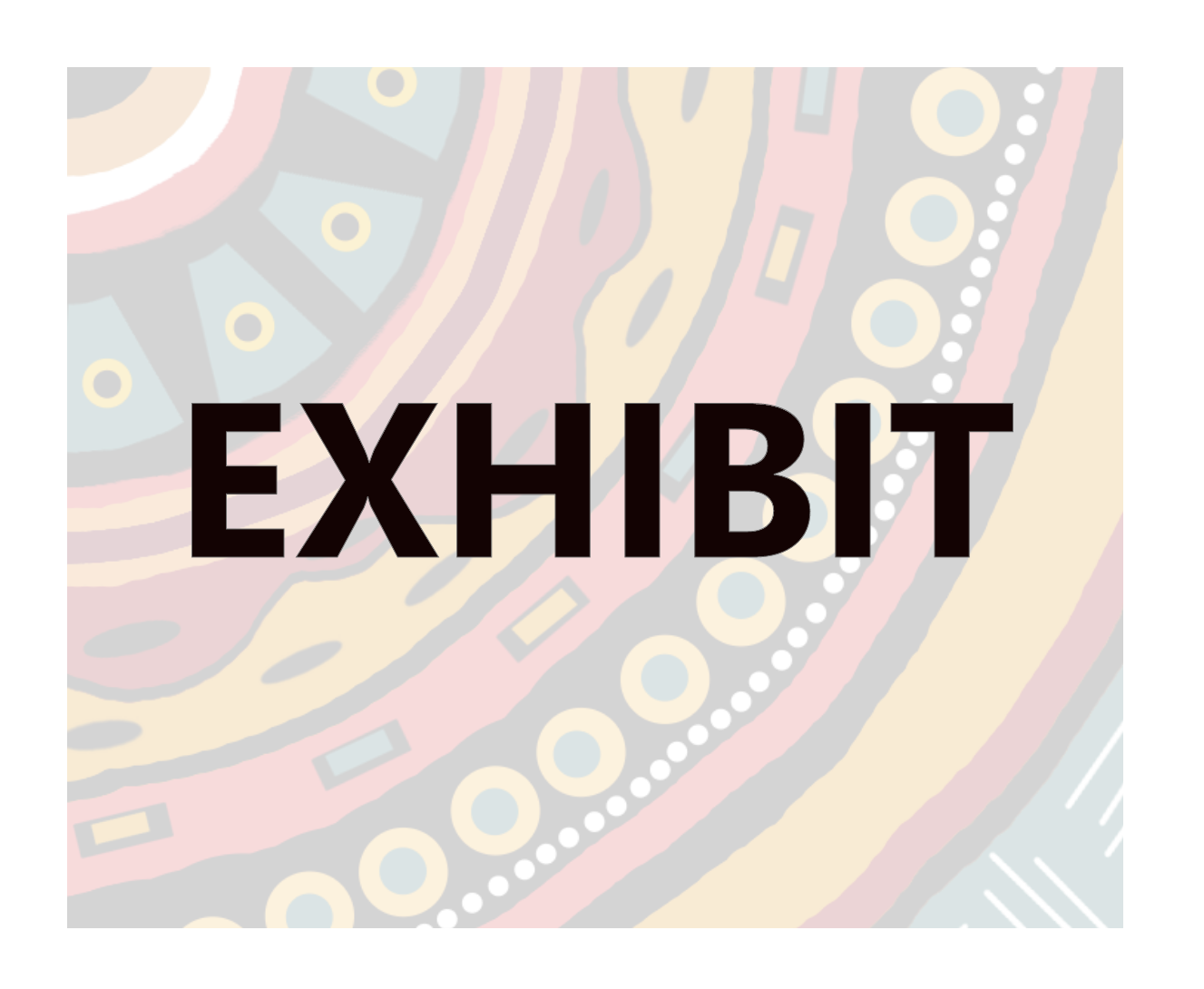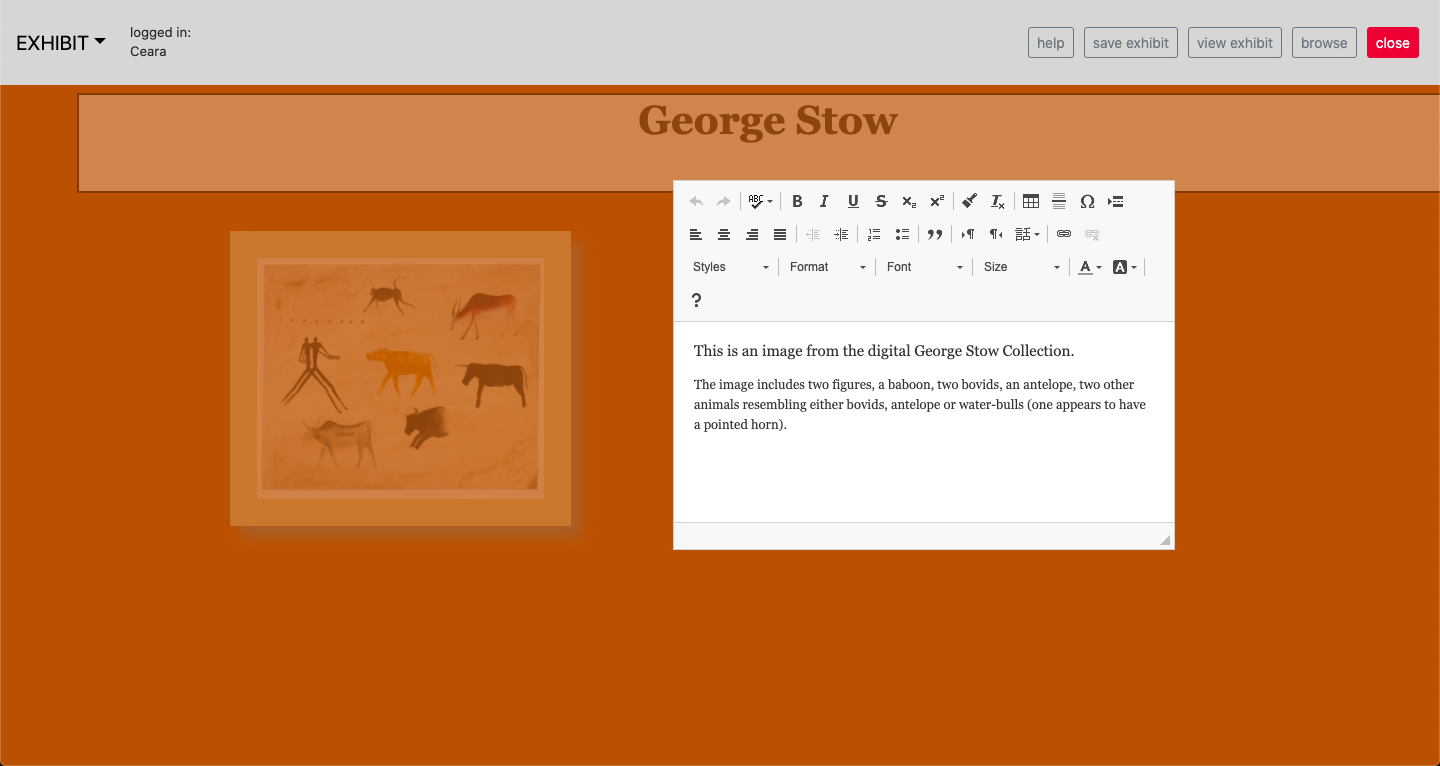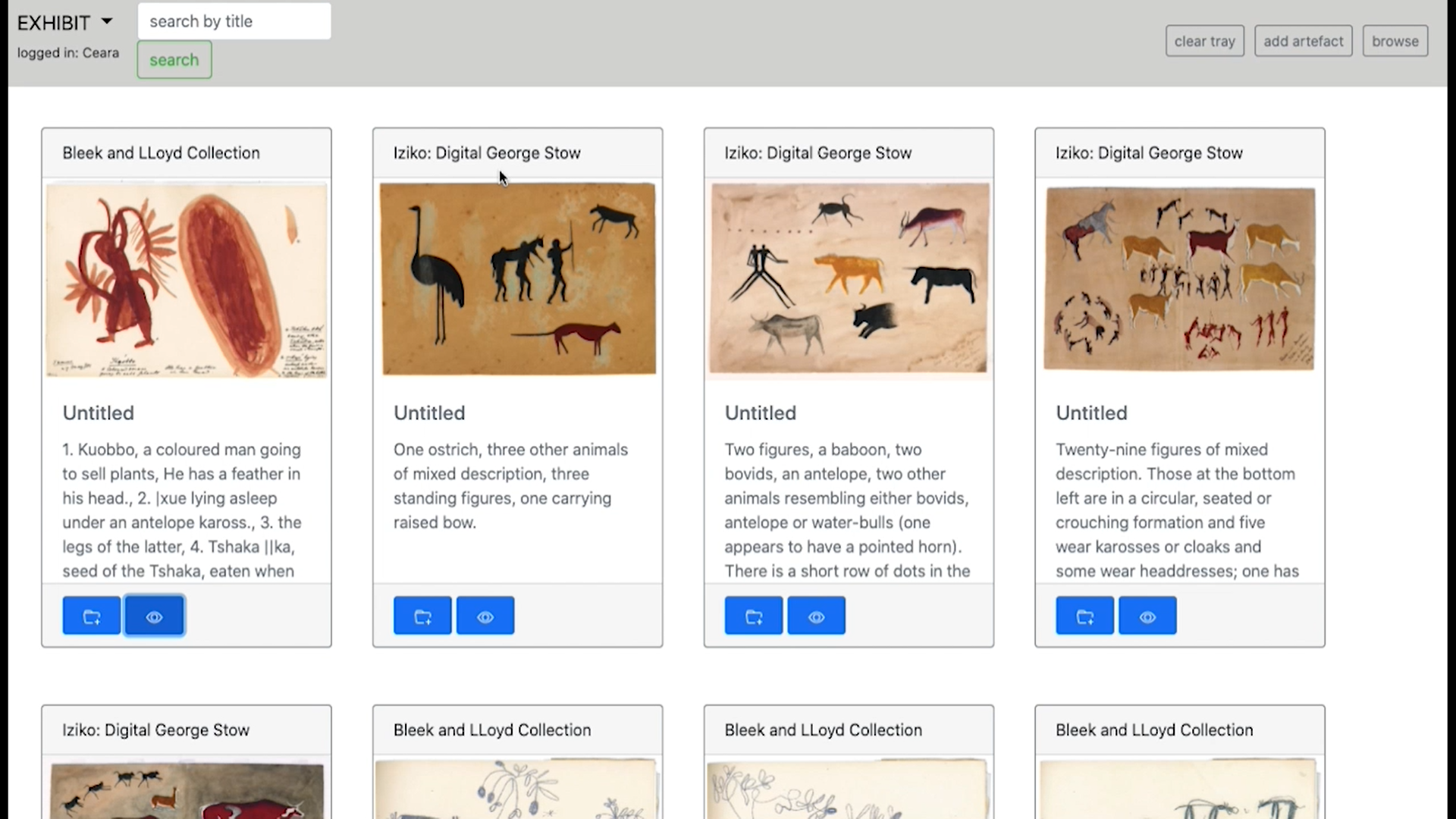
EXHIBIT
An online tool for digital presentations of cultural heritage artefacts
By Aaisha Dout , Ceara Mullins
Talk to us
No meetings are currently scheduled.
Digital archives— collections of multimedia objects — are ideal for preserving and valourising cultural heritage. Web portals allow these collections of cultural heritage artefacts, digitised in the form of images, videos, audio, etc., to be accessed worldwide where previously this would not have been physically possible. In a South African context, projects like the Bleek and Lloyd collection and the Five Hundred Year Archive allow academics and the general public to browse artefacts related to the language, culture and history of indigenous people in Southern Africa. Existing exhibition tools are numerous and make use of varied technology. For example, 3D graphics technology has become popular amongst some galleries and museums as a way to create faithful replicas of physical exhibitions. However, this is overkill for the student user group, which we have found gravitates to tools such as PowerPoint and Google Slides for their ease of use and collaborative features. There is a need for a tool simple enough for those with limited IT expertise to use that at the same time adheres to metadata standards for use by cultural heritage experts to display archive content. The solution is a direct-manipulation tool that outputs exhibitions of collection content in widely used and understood formats such as PDF files and HTML pages.
Videos
Images






